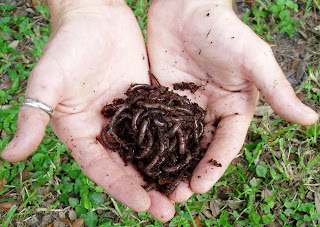We sell a Florida Red Worm that is native to Florida.
Thank you for your interest in Florida Red Worms. We are a Company that
specializing in native worms to the U.S. Vermicomposting with
native Worms is a safe composting approach. Red Worms are great for
turning your food left overs into compost.
Our Florida Worm Farm started in 1965. We raise a Worm that is Native to Florida.
OUR ADDRESS IS 12212 MORRISBRIDGE ROAD TAMPA FLORIDA 33637
Look for us at Interstate 75 and Fletcher, exit 266 Tampa Florida Call us at 813 770 4794Call us Today,, We are Here,
Ask for Hong Kong Willie. 813 770 4794
We ship by size of Red worm,which are large..The reason why we don’t sell by thousands or use this term is because it can be confusing. To explain, a thousand grains of sand is one thing, or a pound of sand is a something else. Shipping large worms which are like a chicken ready to lay eggs and stress less. .When you are buying red worms by the thousands ,expect them to be smaller than a needle.
.
$5.50 23 large Worms per container
View Larger Map
Hong Kong Willie on Yahoo
CAUTION IN BUYING THESE RED WORMS,Eisenia foetida, or"European Night crawlers."are non native red worms,
Eisenia foetida
CAUTION IN BUYING THESE RED WORMS, Eisenia foetida, or"European Night crawlers."are non native worms, Note We sell a Florida Red Worm that is native to Florida.
with any non-native species, it is important not to allow them to reach the wild. Their voracious appetites and reproductive rates (especially among the red wigglers) have been known to upset the delicate balance of the hardwood forests by consuming the leaf litter too quickly. This event leaves too little leaf letter to slowly incubate the hard shelled nuts and leads to excessive erosion as well as negatively affecting the pH of the soil. So, do your best to keep them confined!
Note We sell a Florida Red Worm that is native to Florida.
CAUTION IN BUYING THESE WORMS,Eisenia foetida, or"European Night crawlers."are non native worms,
Eisenia foetida
Eisenia fetida, known under various common names, including redworms, brandling worms, tiger worms and red wiggler worms, are a species of earthworm adapted to decaying organic material. They thrive in rotting vegetation, compost, and manure; they are epigeal. They are native to Europe, but have been introduced (both intentionally and unintentionally) to every other continent except Antarctica, occasionally threatening native species..


